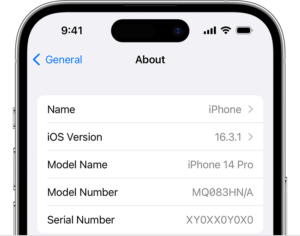Blog Writing for SEO How to Structure Posts for Google

Blog Writing for SEO – How to Structure Posts for Google
In the world of digital marketing, creating content that not only engages readers but also ranks well on Google is an art. As more businesses compete for online visibility, understanding how to structure your blog posts for SEO is a game-changer. Well-structured posts help search engines understand your content better, making it easier for them to rank your articles higher in search results. But how do you get it right? In this article, we’ll explore how to structure your blog posts for SEO and ensure your content gets the attention it deserves.
Why Structure Matters for SEO
You’ve probably spent hours perfecting your blog’s message, tone, and content, but if the structure isn’t optimized for SEO, it might not reach the audience it deserves. The structure of your blog post directly impacts your chances of ranking higher on Google, and here’s why:
-
Search Engine Crawlers Need Clarity: Search engines like Google use bots to “crawl” web pages and understand their content. The clearer and more organized your content, the easier it is for Google to crawl and index it.
-
User Experience (UX): When your blog post is well-structured, readers can easily navigate and find what they’re looking for. This leads to higher engagement, lower bounce rates, and longer time spent on your page—all of which are positive ranking signals for Google.
-
Better Readability: A well-organized post helps readers understand and retain information better. The easier it is for users to engage with your content, the more likely they are to share it, link to it, or comment, all of which contribute to your SEO.
The Key Elements of a Well-Structured SEO Blog Post
So, what does an SEO-friendly blog post look like? Let’s break down the essential components and steps you need to follow to craft a blog that both Google and your audience will love.
1. Craft a Compelling Title
Your blog post title is the first thing users see in search results. It’s also one of the most important elements for SEO. A great title is:
-
Clear and descriptive: It should immediately tell the reader what the blog post is about.
-
Keyword-optimized: Include your main target keyword in the title to help Google understand what your content is about.
-
Engaging: Make the title interesting and clickable. Phrases like “How to,” “Ultimate Guide,” or “Tips for” can draw readers in.
Example: “How to Structure Your Blog Posts for seo blog writing : A Step-by-Step Guide”
2. Write a Strong Meta Description
Your meta description may not directly impact rankings, but it does influence click-through rates (CTR). A good meta description is a concise summary (under 160 characters) of what the post is about. Use the main keyword and create a compelling reason for users to click.
Example: “Learn how to structure your blog posts for SEO to increase your chances of ranking higher on Google. Follow our step-by-step guide for success!”
3. Use Header Tags (H1, H2, H3…)
One of the most critical structural elements of an SEO-friendly blog post is the use of header tags (H1, H2, H3). These tags break up your content and make it easier for readers and search engines to digest.
-
H1 tag: This is your main title and should include your primary keyword. Typically, there’s only one H1 tag per page.
-
H2 and H3 tags: These are subheadings used to break up the content into sections. Use them to organize the post into logical chunks and make it easier to read. Incorporate related keywords and variations of your main keyword to help with ranking.
For example:
-
H1: How to Structure Blog Posts for SEO
-
H2: Why Blog Post Structure is Crucial for SEO
-
H3: Keyword Research and Content Strategy
-
H2: The Anatomy of an SEO-Friendly Blog Post
-
H3: Optimizing Titles and Meta Descriptions
4. Optimize for Keywords
Keyword optimization is at the heart of SEO. But overdoing it can harm your rankings. Here’s how to naturally integrate your keywords without going overboard:
-
Keyword in the Introduction: Include your target keyword in the first 100 words of your post, ideally in the opening sentence.
-
Keyword Density: Use your primary keyword a few times throughout the post, but make sure it flows naturally. Aim for a keyword density of 1-2%. You can also include related keywords or long-tail variations.
-
Keyword in Headings: As mentioned, include keywords in your header tags to give Google a clear idea of the content’s focus.
Remember, keyword stuffing is a no-no. Google prioritizes user experience, so your content should always sound natural.
5. Write a Compelling Introduction
Your introduction is the hook that pulls readers in. It should grab attention and make the reader want to continue. It’s also a good place to include your primary keyword. Here’s how to craft a strong intro:
-
Start with a question, a surprising fact, or a statement that addresses the reader’s pain point.
-
Provide a brief overview of what the post will cover.
-
Keep it engaging and relevant.
6. Keep Paragraphs and Sentences Short
In today’s fast-paced world, readers often skim content. To cater to them and improve readability, keep your paragraphs short—around 2-4 sentences per paragraph. Additionally, break up long sentences into smaller, digestible chunks.
7. Use Internal and External Links
Internal links are hyperlinks to other pages or blog posts on your website. External links point to authoritative websites outside your domain. Both types of links are important for SEO.
-
Internal links help search engines crawl your website more effectively and improve navigation for readers.
-
External links to reputable sources signal to Google that your content is well-researched and relevant.
8. Add Visuals and Optimize Images
Images, videos, and infographics make your blog post more engaging. They also help break up large chunks of text. But don’t forget to optimize images for SEO:
-
Use descriptive file names (e.g., “how-to-structure-seo-blog-post.jpg”).
-
Add alt text to images using relevant keywords. Alt text helps search engines understand the image’s content and is crucial for accessibility.
9. End with a Strong Conclusion and Call to Action
A strong conclusion should summarize the key points of your blog post and provide a clear call to action (CTA). Whether you want readers to sign up for your newsletter, download an eBook, or leave a comment, a CTA encourages engagement and drives conversions.
Example CTA: “Ready to optimize your blog posts for SEO? Download our free checklist and start structuring your content like a pro!”
Final Thoughts
Blog writing for SEO is a delicate balance between delivering valuable content to your audience and structuring your posts in a way that Google can easily understand. By using proper headings, optimizing for keywords, creating an engaging introduction, and making your content user-friendly, you’ll increase your chances of ranking higher in search engine results.
Remember, SEO is a long-term strategy, but with the right structure, your blog posts can help drive more traffic and convert visitors into loyal customers. Happy blogging!





